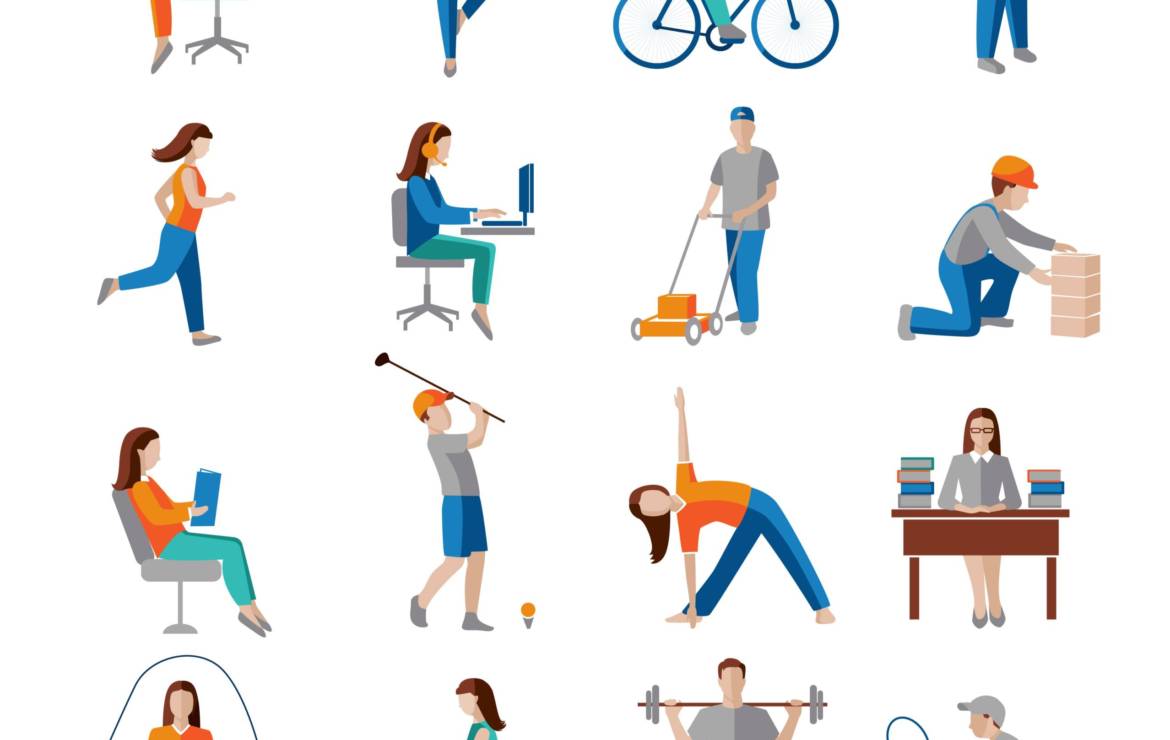I read somewhere that 80% of New Year Resolutions fail by mid-February. As we enter that second week of February and with many of us starting to forget those New Year resolutions to go to the Gym more or increase your exercise regime. I know it is happening as I can now get into classes which were completely full for the most of January. Even though I quite like being able to get into those classes I have missed out on, being a Nutritionist I truly understand the overall benefits of regular physical activity. So here is a little boost in regard to exercise on how much we should be aiming for but also the huge plethora of benefits.
The Physical activity guidelines: UK Chief Medical Officers’ report has been updated and published in September 2019. After reading it through here is a brief summary taken from this report. For the focus of this newsletter I will mainly discuss Adults age 19-64 and Adults 65+.
Back in 2010, we were among the first Nations in the world to set out the evidence for how much and what kinds of physical activity we need to do to keep ourselves healthy. Since then, the evidence has become more compelling and the message is clear:
“If physical activity were a drug, we would refer to it as a miracle cure, due to the great many illnesses it can prevent and help treat.”
Physical activity is not just a health issue. It brings people together to enjoy shared activities and contributes to building strong communities whilst supporting the economy to grow.
In children and young people, regular physical activity is associated with improved learning and attainment, better mental health and cardiovascular fitness, also contributing to healthy weight status. In adults, there is strong evidence to demonstrate the protective effect on physical activity on a range of many chronic conditions including coronary heart disease, obesity and type 2 diabetes, mental health problems and social isolation.
Guidelines for Adults (19 to 64 years)
• For good physical and mental health, adults should aim to be physically active every day. Any activity is better than none, and more is better still.
• Adults should do activities to develop or maintain strength in the major muscle groups. These could include heavy gardening, carrying heavy shopping, or resistance exercise. Muscle strengthening activities should be done on at least two days a week, but any strengthening activity is better than none.
• Each week, adults should accumulate at least 150 minutes (2 1/2 hours) of moderate intensity activity (such as brisk walking or cycling); or 75 minutes of vigorous intensity activity (such as running); or even shorter durations of very vigorous intensity activity (such as sprinting or stair climbing); or a combination of moderate, vigorous and very vigorous intensity activity.
• Adults should aim to minimise the amount of time spent being sedentary, and when physically possible should break up long periods of inactivity with at least light physical activity.
Guidelines for Older Adults (65 years and over)
• Older adults should participate in daily physical activity to gain health benefits, including maintenance of good physical and mental health, wellbeing, and social functioning. Some physical activity is better than none: even light activity brings some health benefits compared to being sedentary, while more daily physical activity provides greater health and social benefits.
• Older adults should maintain or improve their physical function by undertaking activities aimed at improving or maintaining muscle strength, balance and flexibility on at least two days a week. These could be combined with sessions involving moderate aerobic activity or could be additional sessions aimed specifically at these components of fitness.
• Each week older adults should aim to accumulate 150 minutes (two and a half hours) of moderate intensity aerobic activity, building up gradually from current levels. Those who are already regularly active can achieve these benefits through 75 minutes of vigorous intensity activity, or a combination of moderate and vigorous activity, to achieve greater benefits. Weight-bearing activities which create an impact through the body help to maintain bone health.
• Older adults should break up prolonged periods of being sedentary with light activity when physically possible, or at least with standing, as this has distinct health benefits for older people.
So why Exercise?
There is good evidence that the overall impact of sport and activity isn’t just supporting our physical wellbeing but also many other areas have been shown to benefit:
Physical wellbeing: Prevention of medical conditions; Maintenance of strength, balance and motor skills; Management of medical conditions.
Mental Wellbeing: Source of employment and happiness; Improved self-esteem; Improved cognitive function.
Individual development: Development of soft skills; Impact on employment opportunities; Improved confidence and self-esteem.
Social and Community Development: Reducing isolation; Bringing people together from diverse backgrounds; Promoting engagement and civic trust.
Economic Development: Employment and employability; Sport tourism; Health sector savings.
There is also some mixed evidence on how exercise can also support sleep. Those suffering with depression, stress, anxiety and dementia but also educational behaviour and attainment.
Thank you for reading. If you are thinking of taking up any form of exercise and you havent so far talking to a health professional may help to guide you especially if you live with a health condition.
